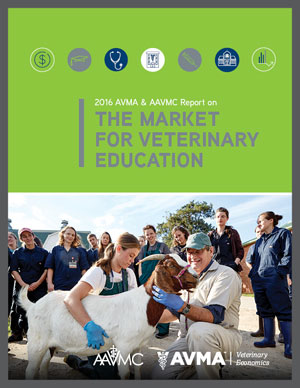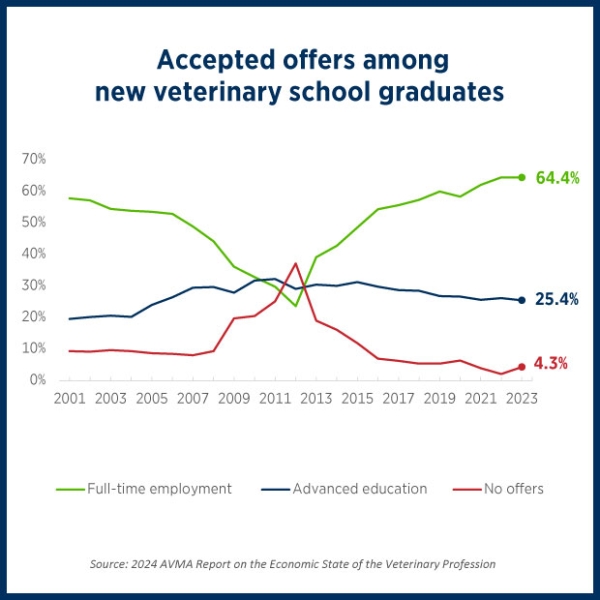New economic report examines the market for veterinary education
 The AVMA & AAVMC (Association of American Veterinary Medical Colleges) today released the 2016 Report on the Market for Veterinary Education, making it available for free download by all AVMA members as part of the AVMA’s 2016 economic reports series.
The AVMA & AAVMC (Association of American Veterinary Medical Colleges) today released the 2016 Report on the Market for Veterinary Education, making it available for free download by all AVMA members as part of the AVMA’s 2016 economic reports series.
The 2016 AVMA & AAVMC Report on the Market for Veterinary Education makes use of data from a variety of sources including the AVMA’s annual Senior Survey of graduating veterinary students, Veterinary Medical College Application System (VMCAS) applicant information, and information from the AAVMC and its member colleges. Subjects addressed in the report include veterinary college applicants, education costs, debt and income levels for new veterinarians, demand for and supply of seats in veterinary colleges, and the very important debt-to-income ratio.
Key findings of the report include:
- Starting salaries for new veterinary graduates and the number of new graduates obtaining full-time employment prior to graduation are increasing. These changes are due to an increase in disposable income that occurs in an economic expansion.
- However, the debt load of new veterinarians also has continued to increase, offsetting the income gains. As a result, the debt-to-income ratio for new veterinarians has held steady at nearly 2 to 1. A more sustainable debt-to-income ratio would be 1.4 to 1.
- For at least the last three decades, the public has been defunding public education, while the real costs of operating schools has risen. For the veterinary profession, this has shifted the burden of providing animal health from the taxpayer to the animal owner.
- 2015 applicants to U.S. veterinary schools had a relatively accurate idea of the debt load of new veterinarians.
In addition to analyzing the most recent economic data related to the veterinary education market, the report also suggests a framework for reducing the debt-to-income level for new veterinarians, involving “a partnership between the public, veterinary colleges, students, and veterinary employers.” Strategies to improve the debt-to-income ratio, the report says, “must come from every corner of the profession and address each point in the supply chain between applicant and the provision of veterinary services where costs are added, as well as the components of demand for veterinarians and veterinary services.”
We encourage all AVMA members to download and read their free copy of this report, as well as the 2016 AVMA Report on Veterinary Markets, which was released last month. The full series of 2016 reports is available for purchase by non-members.
Other reports still to come in the 2016 series will address the market for veterinarians and the market for veterinary services. As with the first two reports, they will be made available to all AVMA members free of charge.


Comments
Add New Comment